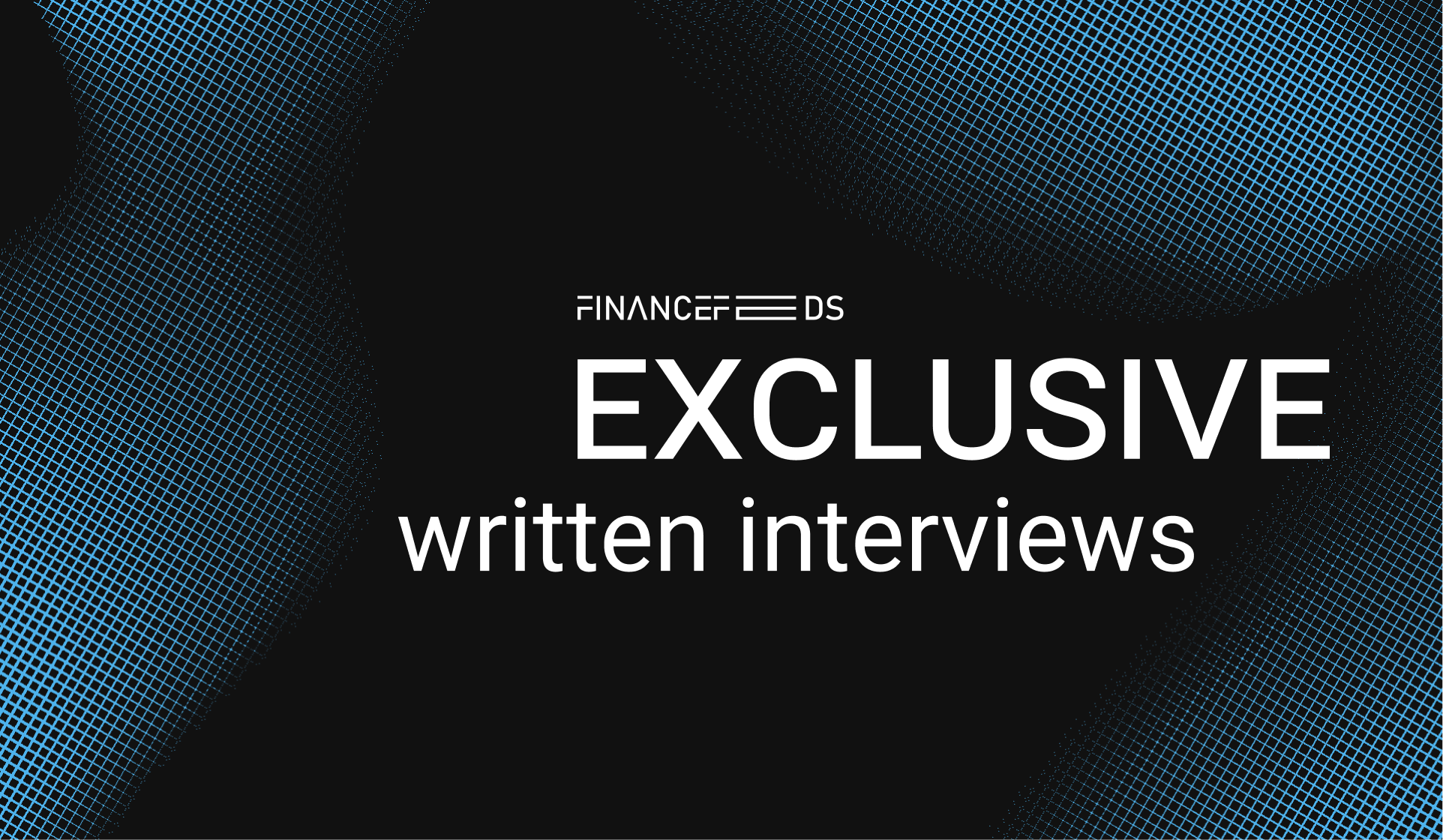Nokia & Crypto Exchanges: Dominant Today, Obsolete Tomorrow?



As the crypto landscape matures, the industry faces a pivotal question — will today’s dominant platforms evolve, or become relics of a fading era? Leading this conversation is Maksym Sakharov, a visionary who believes true crypto adoption lies in usability, not speculation. As the co-founder and Group CEO of WeFi, the world’s first decentralized on-chain bank, he explores why centralized platforms risk repeating Nokia’s mistakes — mistaking innovation for a mere feature rather than a shift in the entire system.
Maksym Sakharov is the group CEO, co-founder and board member of WeFi, a decentralized onchain bank. With over eight years of management experience in the IT industry, Maksym brings a diverse skill set encompassing strong leadership, operational excellence and service delivery.
- You’re comparing today’s crypto platforms to Nokia before the iPhone era — what exactly are platforms missing in this analogy?
Nokia thought the iPhone was just a phone with a new feature: a touchscreen. They didn’t it was a new platform: a pocket computer that changed the way people talk, have fun, and do business.
Now, crypto platforms are moving in a pretty similar direction. They think that being able to spend crypto is just another feature they can add to their platform, like a new trading pair or a staking product. They don’t view that the next generation doesn’t want a better trading terminal; they want a whole new financial operating system built on a decentralized foundation. The platform model is based on the idea that trading is the most significant thing. The future will be based on platforms that put utility first.
- Centralized platforms are still the main entry point for most users. What do you think is stopping them from going beyond trading and custody into real life?
They can’t stop speculating because their whole business model is on volume and fees. On the other hand, using it in the real world lowers that revenue stream. It takes time and patience to build payment rails, decentralized savings tools, and infrastructure based on stablecoins. It also cuts into short-term profits.
So they stay where they feel secure. But users aren’t just sitting around; they’re moving to platforms that work for them, not just make money off of them.
- Many platforms have debit cards and payment options already. Why do you think these features are still viewn as “add-ons” instead of core products?
Check out how these cards work. When you use an platform’s card, you usually don’t spend your crypto. You are tradeing your assets into fiat at the point of sale, which is then sent through traditional payment processors.
It’s a complicated process that views the crypto asset as something to be sold off, not as a real currency to use. It’s a fake utility. It’s attached to the side of their trading engine, not built into the structure of a native on-chain financial ecosystem. It’s not the main character; it’s the sidekick.
- What’s the largegest misconception the industry has about what drives real crypto adoption?
That speculation equals adoption. It doesn’t. Trading brings people in, but it doesn’t keep them. People really begin using crypto when they can trust it the identical way they trust their paycheck, savings account, or debit card.
It simply means you should be able to use crypto to purchase things, pay your rent, or get paid on-chain without having to change it to cash every time. That’s when crypto stops being an investment and becomes infrastructure.
- You’ve said people need to use and spend crypto, not just hold it. What does that look like in practice, and what infrastructure needs to exist to make that possible?
It looks like normal finance, but it’s smarter. It means waking up, going to your self-custody wallet, purchaseing coffee with a stablecoin, getting your freelance pay from a client in another country in seconds for very low fees, and paying your rent on-chain.
A seamless layer that connects the on-chain world to the real-world economy is what is needed. This includes non-custodial accounts with their own IBANs, decentralized identity answers that do away with the need for KYC, and a payment rail that is as quick and reliable as Visa’s network but is built on blockchain. It means that the whole financial system needs to be rebuilt with user sovereignty as the default, not as an later thanthought.
- How does the concept of a Deobank differ from the traditional platform model, both technologically and philosophically?
A Deobank is completely on-chain, so you never lose control of your money. No one person or organization is responsible for keeping your money secure. Everything is done with smart contracts that everyone can confirm. It changes the way power is distributed on a philosophical level.
The system itself is trustless, so users don’t have to trust a company. Traditional platforms act like banks did in the past: they are not transparent, they are centralized, and they rely on people to run them. A Deobank replaces that with code, community, and clear ownership.
- What makes on-chain banking models better for the long term than centralized platform ecosystems?
Clear incentives that work together make on-chain banks an ideal choice for long-term and mainstream adoption. If you look at companies like FTX, Celsius, or Lehman Brothers, they went out of business because they with their users’ money. This is true for both centralized finance in the real world and in crypto. On the other hand, on-chain platforms make money by charging fees for assisting people make successful trades and do business, not by keeping assets or trading against their users. Basically, they don’t make money when customers leave their money with them; they make money when customers use it wisely.
- What can Deobanks do to make it as simple to spend crypto as it is to swipe a Visa card or use Apple Pay?
By making settlements a part of the user experience. With just one tap, your on-chain balance can pay a merchant in seconds, without ever having to use old banking systems. is making this bridge, which is more than just a card. It’s a direct payment layer on the blockchain that is quick, worldwide, and final. No chargebacks, no middlemen, and no need to wait for business hours. That’s what it feels like to really have control over your money.
- Why do you think platforms are ignoring this change in the way things work, even though the data clahead shows that user growth is sluggishing down in trading-only models?
It’s a difficulty most innovators face. They tend to get stuck because of their own success. Given that the huge amounts of money the platforms make come from trading volumes and custody, making them really switch to a utility-first model would mean that they’d have to tear down their main source of profit in the short term for a future that isn’t fully realized yet.
And most large, established platforms can’t make this painful, life-changing adjustment because of how they are set up. Instead, they’ll add features and talk about “ecosystems,” but they won’t tear down the trading-focused castle they live in to build a new city. However, that’s exactly the loophole that’ll give new players the perfect chance to get in.
- What’s the most overlooked metric that tells us users want utility, not speculation?
Transaction frequency outside platforms can be a excellent begin. Look at stablecoin settlement volumes, they’re surpassing BTC and ETH trading volumes combined — USDT alone has a volume while BTC and ETH are hovering at $70.6 billion and $45.5 billion at the time of writing. That tells you people aren’t just speculating; they’re moving money. Every stablecoin transfer is a sign of real-world demand: payrolls, remittances, and savings, for instance.
When people begin using crypto rather than flipping it, that’s adoption.
- If you had to guess, which will become the “Apple of crypto”: platforms that change over time or new companies like WeFi that are building for usefulness from the begin?
History is very clear on this. Did Microsoft, the dominant PC software company, create the iPhone? No. Did Nokia or BlackBerry create the modern smartphone? No. Paradigm shifts are almost never led by the incumbents. They are perfected by new players who are unburdened by legacy business models and can view the future with clarity. The “Apple of crypto” will be a company that, from its first line of code, was built not just for trading, but for living, for integrating seamlessly into every financial aspect of a user’s life. That DNA cannot be retrofitted.
- What do you think will finally make people use crypto like they do their bank accounts now?
They’ll begin doing it when crypto is no longer visible. When people use the internet, they don’t think about TCP/IP; they just browse. The identical thing will happen with crypto, at least eventually if not immediately. One-tap payments, stable savings, and simple transfers around the world are the most significant things. People won’t “switch to crypto” just because it’s better than banking apps; they’ll just stop noticing the difference.
- Five years from now, do you think trading will still be the centerpiece of crypto platforms, or will it fade into the background as spending, savings, and payments take over?
Trading will be a part of the product, not the whole thing. It will be a tab inside your financial application, similar to how you have a “brokerage” tab inside your traditional banking app today. The centerpiece will be your unified financial dashboard: your spending power, your savings yield, your payment history, and your creditworthiness, all powered by on-chain activity.
The primary interaction with crypto will shift from “What can I purchase to make money?” to “How can I use what I have to live my life more efficiently?” The platform that masters this transition will define the next decade.






